Supernovae glow for decades thanks to radioactivity
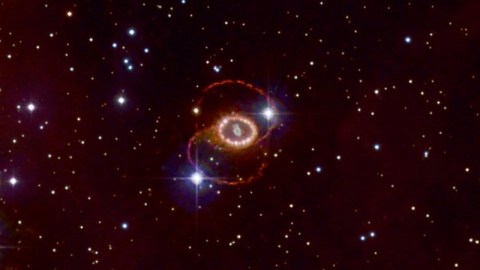
The flash lasts seconds, the brightness dies down in months. Yet centuries later, the remnant still shines.
“When we recall the past, we usually find that it is the simplest things — not the great occasions — that in retrospect give off the greatest glow of happiness.” –Bob Hope
In 1987, the closest supernova was observed since humans last saw one with our naked eyes in 1604.
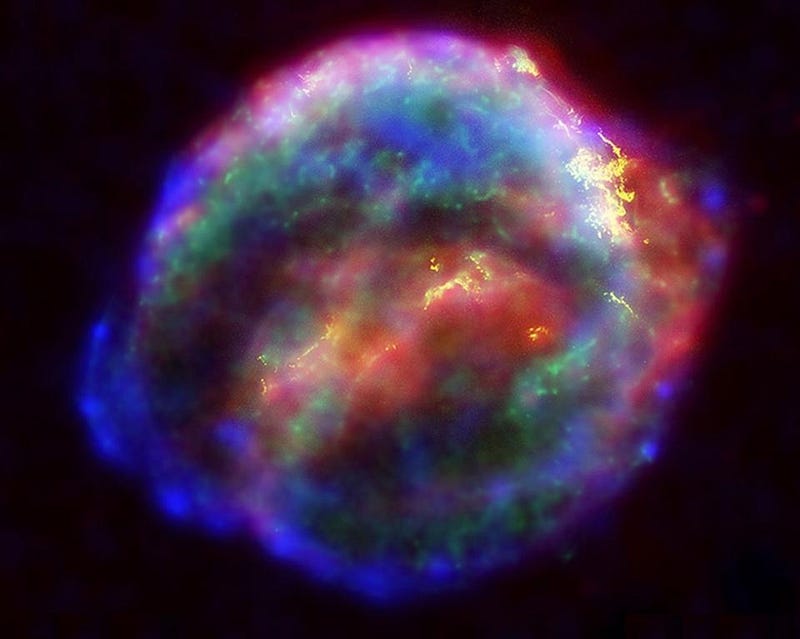
A rush of neutrinos and a flash of light illuminated the heavens as a stellar core imploded, blowing off the massive star’s outer layers.
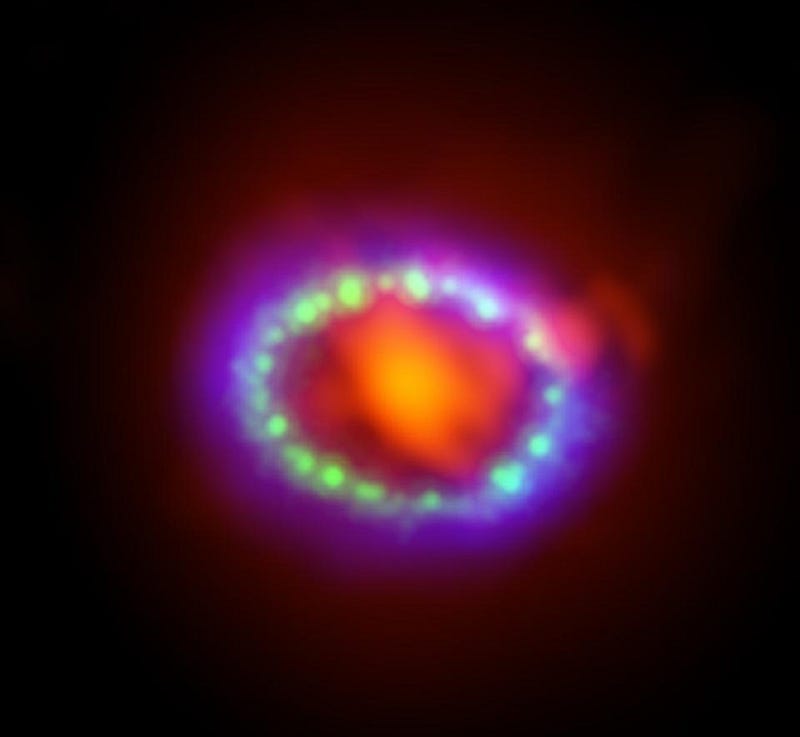
While a supernova brightens, reaches a peak and fades away over a few months, SN 1987A has been visible for decades.
With glittering beads in a circular pattern brightening around the center, the intricate pattern belies a tremendous story.
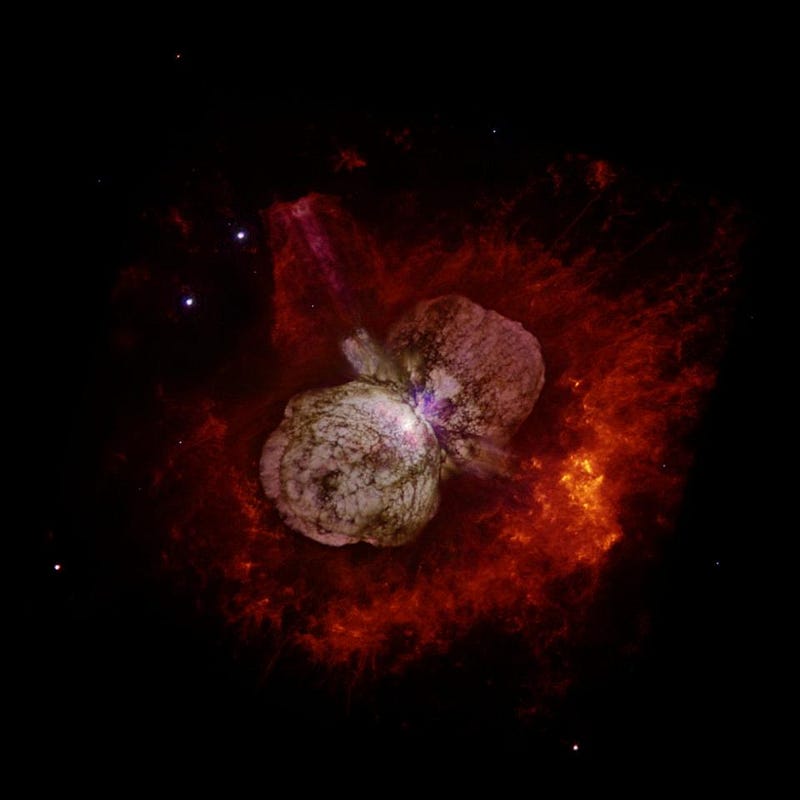
Previous ejecta from similarly massive stars, like Eta Carinae, show that the surrounding interstellar medium is rich in material.
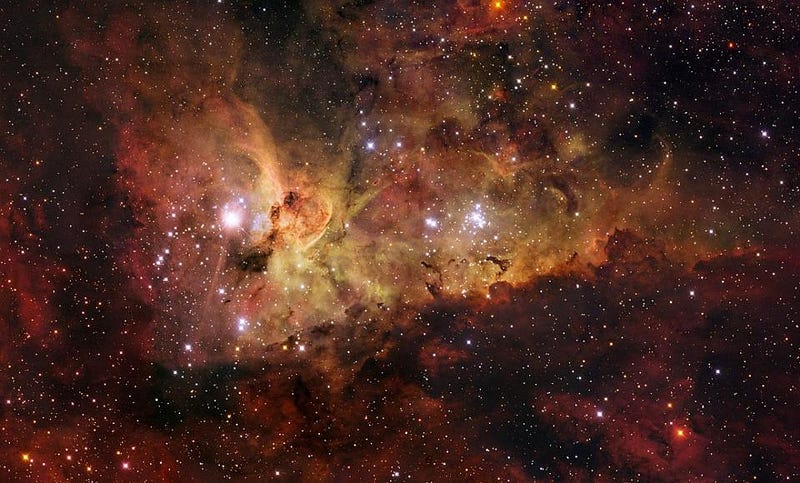
As the supernova radiation smacks into this gas and plasma, electrons ionize and recombine to form atoms, emitting light in the process.
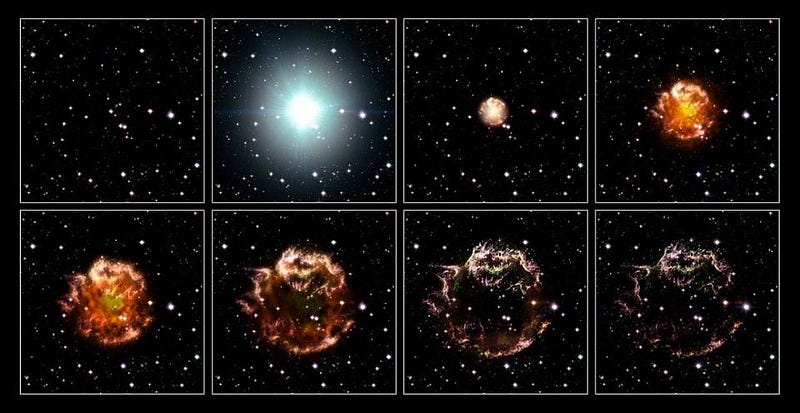
As energy propagates outwards, it smacks into the prior ejecta, lighting it up.
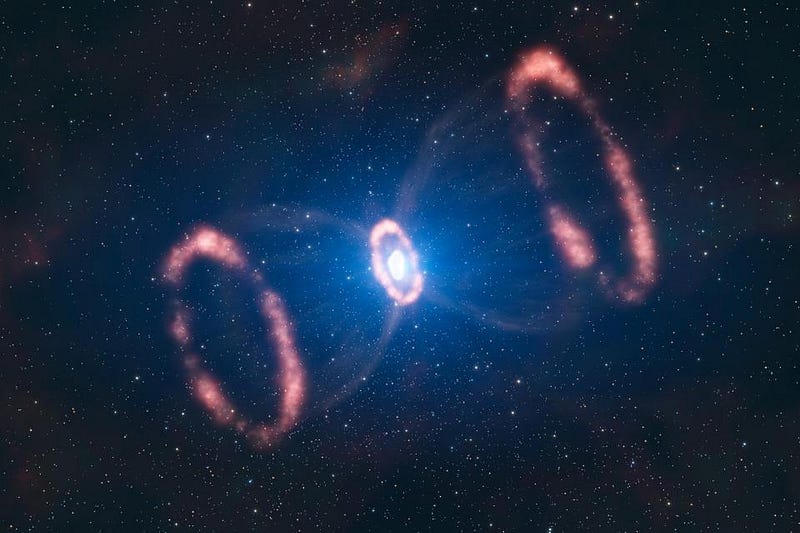
But instead of fading away entirely, radioactive material produced in the explosion — like Cobalt-56 and Cobalt-57 — keep emitting energy.
The neutron capture process builds elements up the periodic table, creating a lasting energy source from a rapid release.
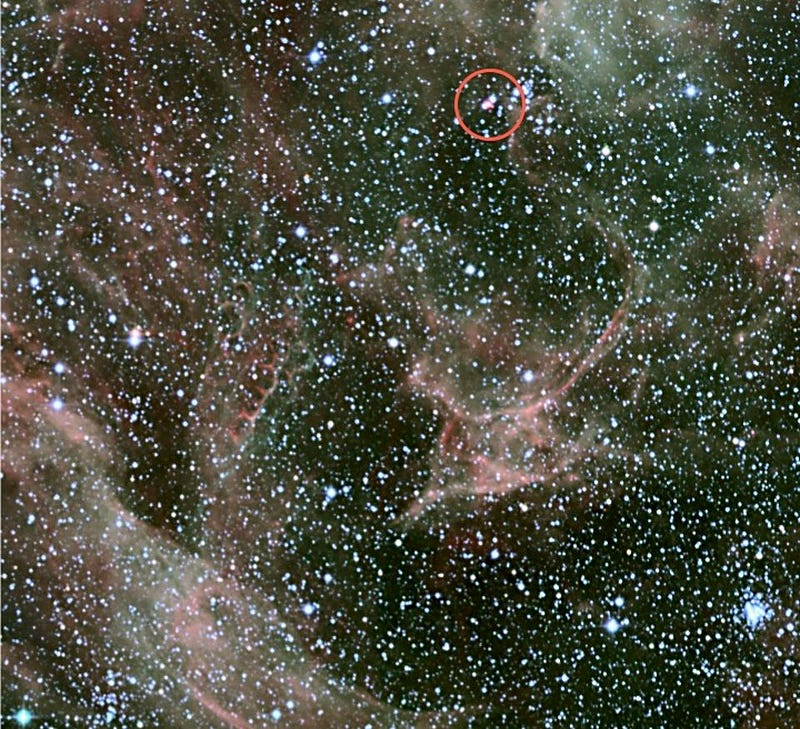
Supernova remnants like this can remain with visible components for centuries, and can continue to be spotted in the radio and X-ray for thousands of years.
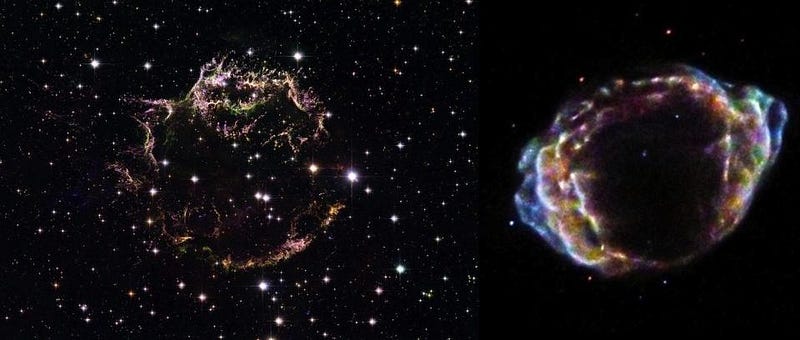
Mostly Mute Monday tells the story of a single astronomical phenomenon or object in mostly visuals, limited to no more than 200 words.
This post first appeared at Forbes, and is brought to you ad-free by our Patreon supporters. Comment on our forum, & buy our first book: Beyond The Galaxy!





